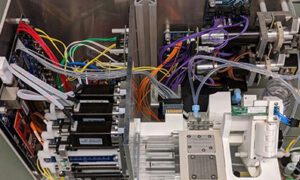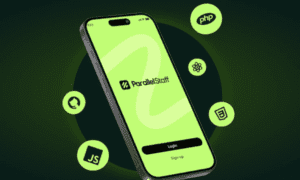In a world where time is of the essence, checklists have become an essential tool for staying organized and on track. But with advancements in technology, these simple lists are becoming smarter and more efficient than ever before. From digital platforms that automate tasks to AI-powered assistants that can prioritize your to-dos, technology is revolutionizing the way we approach checklists.
Introduction:
Checklists have been used for centuries as a way to organize tasks and ensure that important steps are not missed. From the earliest days of human civilization, checklists were used by farmers, craftsmen, and traders to keep track of inventory and supplies. As society evolved, so did the use of checklists in various fields, such as medicine, aviation, and manufacturing.
However, with the rapid advancement of technology in recent years, checklists have also undergone a significant transformation. The traditional pen and paper lists have now been replaced by digital alternatives that offer increased efficiency and accuracy.
Benefits of Using Technology in Checklists
The benefits of using technology in checklists are numerous and can greatly improve the efficiency and effectiveness of any task or project. With the advancements in technology, traditional pen-and-paper checklists have been replaced with digital solutions that offer a wide range of features and capabilities.
One major benefit of using technology in checklists is the ability to automate tasks. With traditional checklists, individuals would need to manually cross off items as they were completed. This could be time-consuming and prone to human error. However, with digital checklists, tasks can be automatically checked off once completed, saving time and ensuring accuracy.
Additionally, technology allows for real-time updates and notifications. In today’s fast-paced world, things can change quickly, and it is essential to stay on top of these changes. Digital checklists allow for instant updates to be made if there are any changes or additions to the task at hand. This ensures that all team members are working with the most up-to-date information.
Another advantage of using technology in checklists is its accessibility. With traditional paper-based lists, team members may need to physically carry around a physical copy or make copies for each team member. However, with digital solutions, everyone on the team can access the checklist from their own devices at any time. This increases collaboration and streamlines communication among team members.
Technology offers customization options that were not available with traditional methods. Digital checklists allow for color-coding, sorting by priority or due date, adding notes or comments to tasks, attaching relevant documents or images, and more. These features provide a more organized structure for checklists and improve overall productivity.
One significant benefit of incorporating technology into checklists is its data collection and analysis capabilities. By tracking completion rates and identifying areas where delays occur frequently, teams can analyze their processes and make necessary improvements for future projects.
Examples of Smart Checklist Apps and Tools
Smart checklist apps and tools have become increasingly popular in recent years due to their ability to streamline and improve the efficiency of various tasks. In this section, we will explore some examples of these innovative tools that are revolutionizing the way we use checklists.
1. Trello: Trello is a project management tool that uses a visual interface to help users organize and prioritize tasks. It offers features such as checklists, due dates, labels, and team collaboration, making it an ideal choice for creating smart checklists. With its user-friendly interface and customizable options, Trello enables teams to create personalized workflows and stay on top of their goals.
2. Evernote: Evernote is a note-taking app that allows users to create digital notebooks for organizing ideas, projects, or tasks. It also offers a checklist feature that lets you turn your notes into actionable items with reminders and due dates. This makes it an excellent tool for creating smart checklists for personal or professional use.
3. Google Keep: Google Keep is another note-taking app that offers a simple yet powerful checklist feature. Users can easily create lists with checkboxes and set reminders based on time or location. Additionally, Google Keep allows you to share your lists with others for collaborative purposes, making it perfect for teams working together on complex projects.
Real-life Applications of Smart Checklists with Technology
Smart checklists have become a popular tool in various industries due to their ability to streamline processes, improve efficiency, and reduce errors. With the integration of technology, these checklists have evolved into even more powerful tools with real-life applications that have revolutionized the way businesses operate. In this section, we will explore some of the most significant real-life applications of smart checklists with technology.
1. Project Management:
One of the most common uses of smart checklists with technology is in project management. With multiple projects running simultaneously, it can be challenging for project managers to keep track of all tasks and deadlines manually. Smart checklists allow project managers to create customized templates for each project and assign tasks to team members. The checklist will automatically update as tasks are completed, providing real-time progress updates and ensuring that every task is accounted for.
2. Quality Control:
In industries such as manufacturing and healthcare, quality control is crucial to maintaining high standards and meeting regulatory requirements. Smart checklists with technology can significantly aid in this process by automating data collection and analysis. For instance, sensors attached to machines can collect data on production speed or temperature levels, which are then cross-checked against a pre-set checklist for any discrepancies or errors.
3. Compliance Audits:
Compliance audits are an essential part of many businesses’ operations, but they can also be time-consuming and complex without proper tools in place. Smart checklists with technology enable companies to streamline compliance audits by creating digital forms that automatically populate relevant data from other systems or databases. This not only saves time but also reduces human error in data collection.
4. Safety Inspections:
The safety of employees is paramount in any workplace setting, making regular safety inspections vital for identifying potential hazards and addressing them promptly. Smart checklists with technology make safety inspections more efficient by allowing inspectors to gather information using mobile devices instead of traditional pen-and-paper methods. Photos or videos can also be attached to the checklist, providing visual evidence of any safety concerns.
5. Training and onboarding:
Smart checklists with technology are also highly effective in training and onboarding processes, especially in industries that require specific protocols or procedures to be followed. By creating interactive, digital checklists, new employees can learn step-by-step instructions and easily refer back to them whenever needed. This not only saves time but also ensures consistency in training across all employees.
Conclusion
Smart checklists with technology have numerous real-life applications that have transformed the way businesses operate. From project management to safety inspections and compliance audits, these tools have proven to be essential for increasing efficiency and reducing errors in various industries. As technology continues to advance, we can expect even more innovative ways to use smart checklists for improved business operations.



































